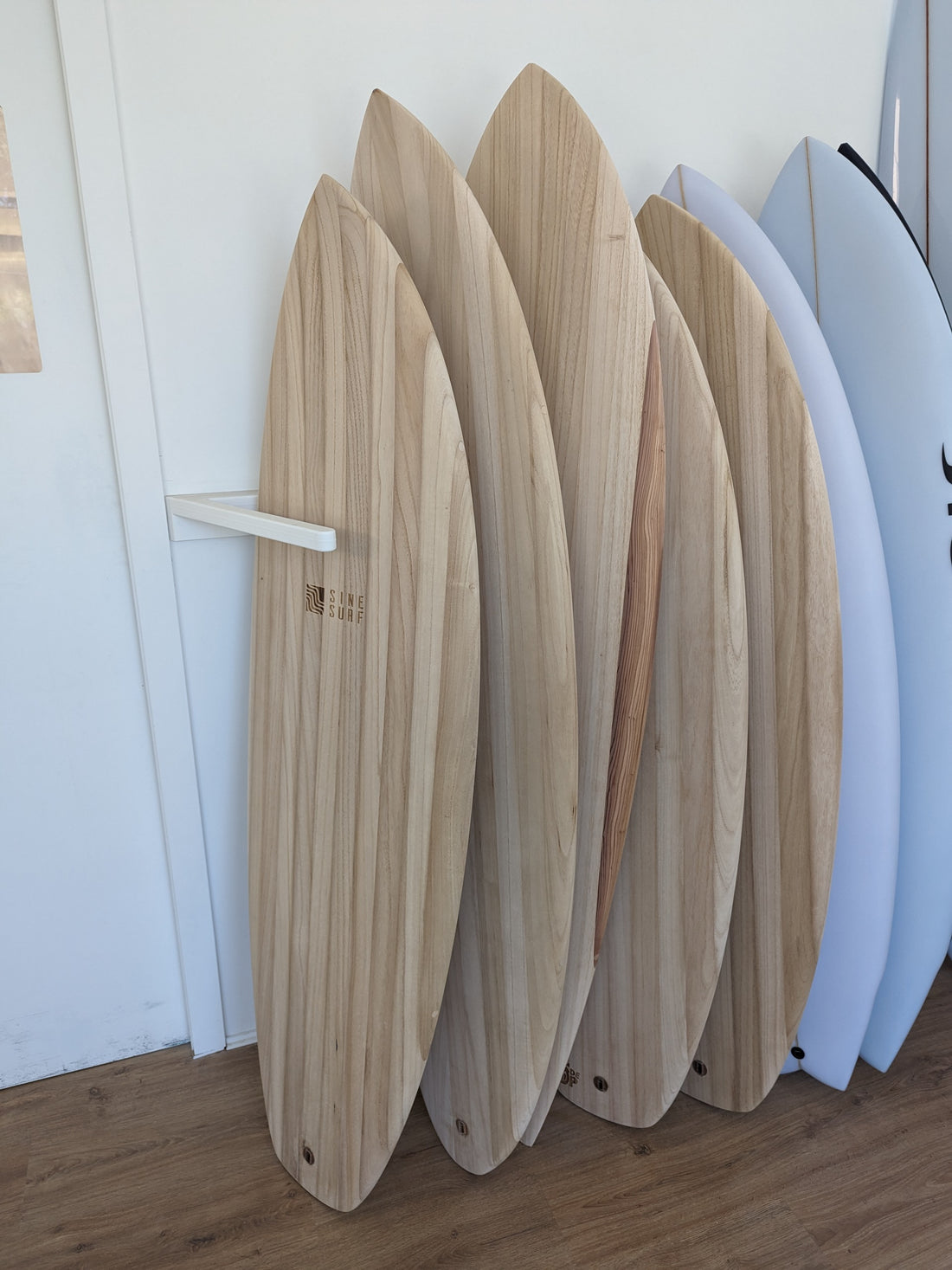
The Great Debate: Wooden Surfboards vs. Traditional Foam Boards
Surfing is not just a sport; it’s a lifestyle, a culture, and for many, a form of art. As surfers, we often find ourselves at a crossroads when it comes to choosing the right board. Among the myriad options available, two distinct categories stand out: wooden surfboards and traditional foam core boards. Each has its own unique characteristics, advantages, and aesthetic appeal. In this post, we’ll dive deep into the differences between these two types of surfboards, with a special focus on Paulownia wood, often hailed as the best timber for wooden boards.
Material Composition
Wooden Surfboards
Wooden surfboards are made from various types of wood, with Paulownia emerging as a favorite among shapers and surfers alike. Known for its lightweight and strong properties, Paulownia offers an excellent balance of durability and performance. The construction typically involves a hollow frame or chambered construction creating a board that is both aesthetically pleasing and functional.
Foam Core Surfboards
On the other hand, traditional foam core surfboards are made from materials like polyurethane or expanded polystyrene (EPS), encased in fiberglass and resin. This construction method results in a lightweight board that is buoyant and easy to maneuver, making it a popular choice for competitive surfers.
Weight and Buoyancy
Wooden Boards
One of the most significant differences lies in weight. Wooden boards, especially those made from Paulownia, are surprisingly lightweight compared to other hardwoods. This makes them easier to paddle and maneuver, although they are usually still a little heavier than foam boards. The buoyancy of a wooden board can vary based on the design and thickness, but many surfers appreciate the unique feel and ride that wood provides.
Foam Boards
Foam core boards are generally lighter and more buoyant than wooden boards. This buoyancy allows for easier paddling and quicker turns, which is crucial for performance surfing. The lightweight nature of foam makes it hard to beat for performance shortboards.
Durability and Maintenance
Wooden Boards
While wooden surfboards can be incredibly durable, they may require more maintenance than their foam counterparts. Wood is susceptible to water damage However, Paulownia is naturally resistant to moisture, making it a great choice for those looking for a wooden board that can withstand the elements.
Foam Boards
Foam boards are typically more resistant to impact and water absorption. However, if the fiberglass layer gets damaged, they can absorb water, leading to deterioration. Regular maintenance is essential to keep foam boards in good condition.
Environmental Impact
Wooden Boards
Choosing a wooden surfboard, especially one made from sustainably sourced Paulownia, can be a more eco-friendly option. Paulownia trees grow quickly and can be harvested sustainably, making them a responsible choice for environmentally conscious surfers. Additionally, wooden boards are mostly biodegradable, reducing their environmental footprint.
Foam Boards
The production of foam and fiberglass can have a larger environmental impact. However, there are now more eco-friendly options available in the foam board market, including boards made from recycled materials. Still, the overall sustainability of foam boards often lags behind that of wooden boards.
Cost Considerations
Wooden Boards
Custom wooden surfboards are more expensive due to the craftsmanship involved in their creation. The unique nature of each board, especially those made from high-quality Paulownia, often reflects in the price. However, many surfers view this as an investment in quality and sustainability.
Foam Boards
Foam core boards are generally more affordable and widely available, making them accessible to a broader range of surfers. The mass production of foam boards contributes to lower costs, but this can sometimes come at the expense of individuality and craftsmanship.
Conclusion
In the end, the choice between a wooden surfboard and a traditional foam core board comes down to personal preference, surfing style, and values. Wooden boards, particularly those made from Paulownia, offer a unique blend of aesthetics, performance, and sustainability that appeals to many surfers. They provide a nostalgic connection to the roots of surfing while delivering a distinct riding experience.
On the other hand, foam boards excel in performance and convenience, making them a staple for competitive surfers. Whether you choose the craftsmanship of a wooden board or the performance of a foam board, both have their place in the diverse world of surfing.
